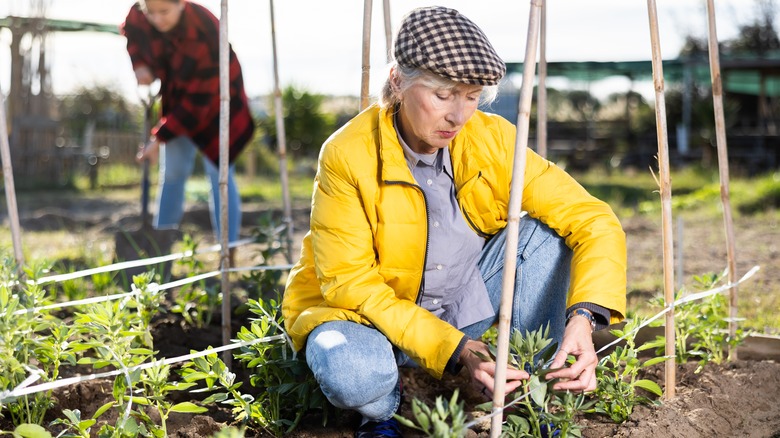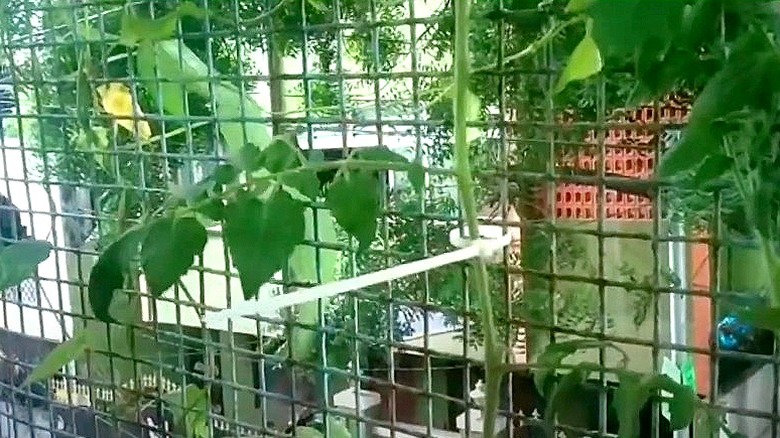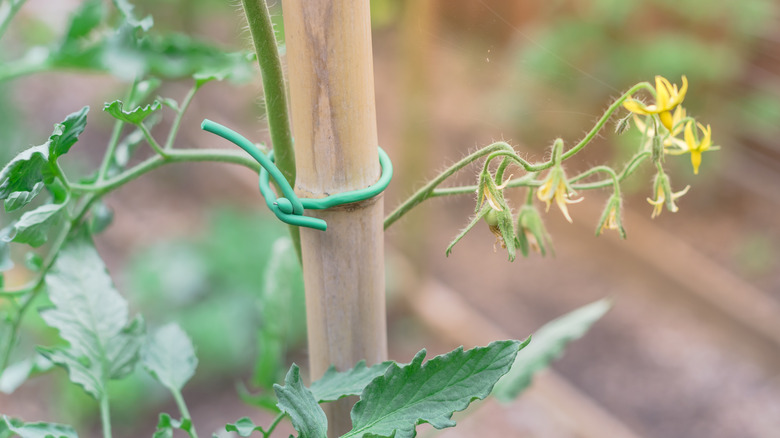Why Gardeners Should Have Zip Ties Handy When Growing Creeping Plants
As their name suggests, climbing plants grow upward from the ground, often wrapping themselves around tree trunks as they go. You're probably familiar with English ivy vines and flowers like climbing roses and morning glories that love a trellis and will even scale a wall if you let them. What allows these thin- and weak-stemmed climbers to skillfully make that upward trajectory are tendrils, suckers, or bristles that they use to take hold of their support structures and not let go, explains Ambius.
Creeping plants are a lot like climbing plants, except that they lack the necessary utilities to cling to anything, and they have even weaker stems that can't bear even the slightest amount of weight. Because of this, creepers are generally found in their natural habitats creeping along the ground instead of climbing upward; two perfect examples of this would be strawberries and brightly blooming phlox. Sometimes a healthy creeper can grow with such abandonment that it starts to take over your landscape, almost like a ground cover. (We're looking at you creeping Jenny.) Or, it may just be that you have a design in mind and you want to train your plants to grow in a certain direction. This is where zip ties become a gardener's best friend.
How to use zip ties
As demonstrated by the Affordable Organic Store, zip ties can easily be used to secure a weak creeper stem to a support structure. Tighten the zip tie slowly in order to find the sweet spot between too loose and too tight. It needs to be secure enough to keep the vine steady, but it also needs to provide space for the plant to breathe and move and grow. It may help to secure your zip ties right below a leaf juncture, which will stop the stem from slipping down.
Ground creeping vegetables like zucchini can be trained vertically up a trellis, too, provided they're manually tied to the stakes as they grow, notes Organic Backyard Gardening. Considering summer squash are known to spread up to 15 feet in the garden, vertical growing provides an excellent way to maximize your outdoor space so you can enjoy thriving plants without sacrificing coveted square feet on the ground. This technique will also make it feasible to grow squash in containers when you lack a yard altogether. Zucchini plants will get heavier as they begin to fruit, so you'll need to keep a close eye on their progress and add ties as necessary.
More tips for training creeping plants
Zip ties, coated wire, and twist ties are all cheap and useful to have around the house for a number of different reasons. In addition to training creepers, they'll work in a pinch to repair a broken fence or secure a rogue drip irrigation line. Either option will get the job done of training your creeping plants to grow where you want them to. Keeping creepers off the ground ensures sufficient air circulation around the foliage, cutting down on the risk of fungal diseases. It also keeps any developing fruit up and out of reach of hungry garden visitors.
If you prefer to rely on natural products for your plants you can opt for jute twine or cotton string to train plants, but they do have a few downsides. Per Garden Gate Magazine, some are expensive, some have been treated with strong chemicals to make them weather-proof, and some are too thin to work with comfortably. One more note about natural products is that biodegradable means they'll break down, which in turn means you'll need to replace them each season. On the flip side, those zip ties will be there for the long haul.


